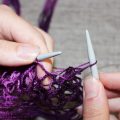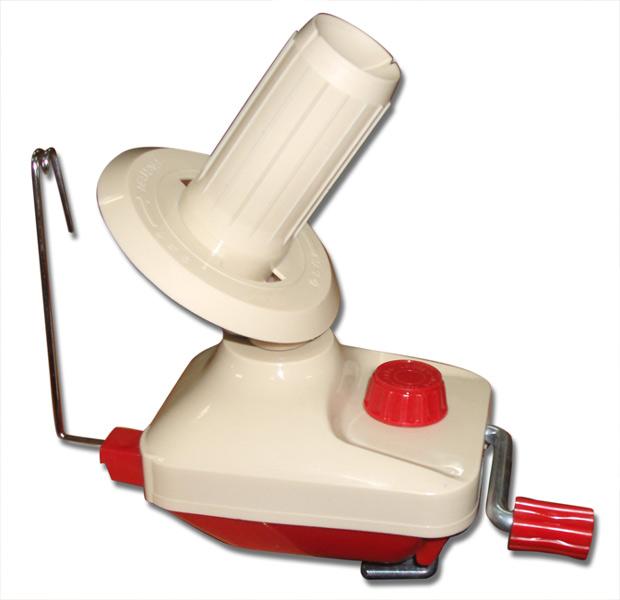Choosing the yarn
You came to the store, looked at the shelves and, ifthis is a big store, gasped: "And what should I choose!" Eyes scatter! A consultant is already in a hurry to help you and ask if you can be helped. In his bewildered eyes, he realizes that he needs help and asks what are you going to knit. And what are you going to knit! Yarn, its thickness, density, composition - it depends on what purpose it is used for! There are three main types of yarn: natural, mixed and artificial. But do not immediately rush and run for the natural, based on the principle - the natural - always quality! You will be surprised and disappointed if, having bought a natural yarn, it can in the finished product behave completely unsuitable, sit down or, on the contrary, stretch out! By natural yarn include: cotton, wool, mohair, alpaca, flax, viscose, silk, bamboo. And each material has its own qualities! For example, cotton - behaves remarkably well in the hands, knit is a pleasure, the color range is large, but it dries long after washing and can “sit down”. Flax - dries quickly after washing, it is pleasant to knit, but due to the fact that it is poorly colored, the color is often limited to natural. Wool is warm, when knitting heating material, as you imagine yourself in a wool sweater and socks made of soft yarn, it becomes warm and comfortable, but wool is a very whimsical material, it can sit down when washed in hot water, stretch out when improperly dried, and return the shape of the spoiled thing is practically unreal! Moreover, it should be noted that mohair, alpaca, wool and silk are yarns made from animal products. But cotton, flax, viscose and bamboo are vegetable yarns. Artificial yarns are: polyester, acrylic. These yarns behave very well during washing, they dry quickly after washing and are practically not deformed. If you are allergic, then surely this is the way out! Often children are knitted from acrylic, because acrylic irritates the skin less than wool, and in terms of heat capacity they are often comparable (depending on the quality of the yarn)! So, the choice of yarn is strictly individual for each individual product, if it would seem that the color and composition of the yarn would fit, then thickness may not be suitable. Most often, if we look at knitting magazines, books, manuals or my MKs, then the quantity, composition and brand of yarn used is indicated, otherwise the yarn is selected by trial and error: for this, we will knit a test sample, but I will tell you about it a little later. when we will be able to do something with the recalcitrant thread and crochet. ? If you look closely at the photo, you will see different yarns:  Lower row, from left to right: Half-woolen (50% wool, 50% acrylic) - very soft and pliable, warm, now I knit a sweater from this yarn for my husband; angora (49% wool, 51% acrylic) - fluffy, gentle, soft, will I necessarily knit a hank of mittens from this for myself and my daughter for the winter? ; acrylic (100% acrylic) - I am in love with this very yarn of the Souffle of the Semenovskaya factory, I knit hats, scarves, mittens, bags …… very flexible, it is good to use for thick things, multi-layered, because dries quickly. The middle row is polyester, it looks beautiful in the end products, there is my MK for knitting warm headphones using this yarn. The top row - cotton, Iris yarn - fits well, looks great in the finished product, you can knit, in principle, everything your heart desires! As you can see, all the yarns are white, but some have their own, specific shade, so when choosing, also consider this! In we talk - our main tool! Want to keep abreast of new lessons! Subscribe!
Lower row, from left to right: Half-woolen (50% wool, 50% acrylic) - very soft and pliable, warm, now I knit a sweater from this yarn for my husband; angora (49% wool, 51% acrylic) - fluffy, gentle, soft, will I necessarily knit a hank of mittens from this for myself and my daughter for the winter? ; acrylic (100% acrylic) - I am in love with this very yarn of the Souffle of the Semenovskaya factory, I knit hats, scarves, mittens, bags …… very flexible, it is good to use for thick things, multi-layered, because dries quickly. The middle row is polyester, it looks beautiful in the end products, there is my MK for knitting warm headphones using this yarn. The top row - cotton, Iris yarn - fits well, looks great in the finished product, you can knit, in principle, everything your heart desires! As you can see, all the yarns are white, but some have their own, specific shade, so when choosing, also consider this! In we talk - our main tool! Want to keep abreast of new lessons! Subscribe!




